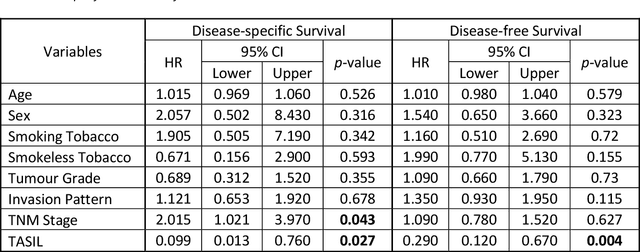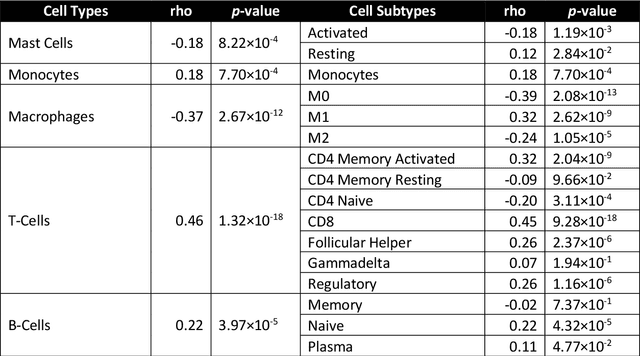Mariam Hassan
LayerSync: Self-aligning Intermediate Layers
Oct 14, 2025Abstract:We propose LayerSync, a domain-agnostic approach for improving the generation quality and the training efficiency of diffusion models. Prior studies have highlighted the connection between the quality of generation and the representations learned by diffusion models, showing that external guidance on model intermediate representations accelerates training. We reconceptualize this paradigm by regularizing diffusion models with their own intermediate representations. Building on the observation that representation quality varies across diffusion model layers, we show that the most semantically rich representations can act as an intrinsic guidance for weaker ones, reducing the need for external supervision. Our approach, LayerSync, is a self-sufficient, plug-and-play regularizer term with no overhead on diffusion model training and generalizes beyond the visual domain to other modalities. LayerSync requires no pretrained models nor additional data. We extensively evaluate the method on image generation and demonstrate its applicability to other domains such as audio, video, and motion generation. We show that it consistently improves the generation quality and the training efficiency. For example, we speed up the training of flow-based transformer by over 8.75x on ImageNet dataset and improved the generation quality by 23.6%. The code is available at https://github.com/vita-epfl/LayerSync.
From Generation to Generalization: Emergent Few-Shot Learning in Video Diffusion Models
Jun 08, 2025Abstract:Video Diffusion Models (VDMs) have emerged as powerful generative tools, capable of synthesizing high-quality spatiotemporal content. Yet, their potential goes far beyond mere video generation. We argue that the training dynamics of VDMs, driven by the need to model coherent sequences, naturally pushes them to internalize structured representations and an implicit understanding of the visual world. To probe the extent of this internal knowledge, we introduce a few-shot fine-tuning framework that repurposes VDMs for new tasks using only a handful of examples. Our method transforms each task into a visual transition, enabling the training of LoRA weights on short input-output sequences without altering the generative interface of a frozen VDM. Despite minimal supervision, the model exhibits strong generalization across diverse tasks, from low-level vision (for example, segmentation and pose estimation) to high-level reasoning (for example, on ARC-AGI). These results reframe VDMs as more than generative engines. They are adaptable visual learners with the potential to serve as the backbone for future foundation models in vision.
GEM: A Generalizable Ego-Vision Multimodal World Model for Fine-Grained Ego-Motion, Object Dynamics, and Scene Composition Control
Dec 15, 2024



Abstract:We present GEM, a Generalizable Ego-vision Multimodal world model that predicts future frames using a reference frame, sparse features, human poses, and ego-trajectories. Hence, our model has precise control over object dynamics, ego-agent motion and human poses. GEM generates paired RGB and depth outputs for richer spatial understanding. We introduce autoregressive noise schedules to enable stable long-horizon generations. Our dataset is comprised of 4000+ hours of multimodal data across domains like autonomous driving, egocentric human activities, and drone flights. Pseudo-labels are used to get depth maps, ego-trajectories, and human poses. We use a comprehensive evaluation framework, including a new Control of Object Manipulation (COM) metric, to assess controllability. Experiments show GEM excels at generating diverse, controllable scenarios and temporal consistency over long generations. Code, models, and datasets are fully open-sourced.
ThermoNeRF: Multimodal Neural Radiance Fields for Thermal Novel View Synthesis
Mar 18, 2024Abstract:Thermal scene reconstruction exhibit great potential for applications across a broad spectrum of fields, including building energy consumption analysis and non-destructive testing. However, existing methods typically require dense scene measurements and often rely on RGB images for 3D geometry reconstruction, with thermal information being projected post-reconstruction. This two-step strategy, adopted due to the lack of texture in thermal images, can lead to disparities between the geometry and temperatures of the reconstructed objects and those of the actual scene. To address this challenge, we propose ThermoNeRF, a novel multimodal approach based on Neural Radiance Fields, capable of rendering new RGB and thermal views of a scene jointly. To overcome the lack of texture in thermal images, we use paired RGB and thermal images to learn scene density, while distinct networks estimate color and temperature information. Furthermore, we introduce ThermoScenes, a new dataset to palliate the lack of available RGB+thermal datasets for scene reconstruction. Experimental results validate that ThermoNeRF achieves accurate thermal image synthesis, with an average mean absolute error of 1.5$^\circ$C, an improvement of over 50% compared to using concatenated RGB+thermal data with Nerfacto, a state-of-the-art NeRF method.
A digital score of tumour-associated stroma infiltrating lymphocytes predicts survival in head and neck squamous cell carcinoma
Apr 16, 2021



Abstract:The infiltration of T-lymphocytes in the stroma and tumour is an indication of an effective immune response against the tumour, resulting in better survival. In this study, our aim is to explore the prognostic significance of tumour-associated stroma infiltrating lymphocytes (TASILs) in head and neck squamous cell carcinoma (HNSCC) through an AI based automated method. A deep learning based automated method was employed to segment tumour, stroma and lymphocytes in digitally scanned whole slide images of HNSCC tissue slides. The spatial patterns of lymphocytes and tumour-associated stroma were digitally quantified to compute the TASIL-score. Finally, prognostic significance of the TASIL-score for disease-specific and disease-free survival was investigated with the Cox proportional hazard analysis. Three different cohorts of Haematoxylin & Eosin (H&E) stained tissue slides of HNSCC cases (n=537 in total) were studied, including publicly available TCGA head and neck cancer cases. The TASIL-score carries prognostic significance (p=0.002) for disease-specific survival of HNSCC patients. The TASIL-score also shows a better separation between low- and high-risk patients as compared to the manual TIL scoring by pathologists for both disease-specific and disease-free survival. A positive correlation of TASIL-score with molecular estimates of CD8+ T cells was also found, which is in line with existing findings. To the best of our knowledge, this is the first study to automate the quantification of TASIL from routine H&E slides of head and neck cancer. Our TASIL-score based findings are aligned with the clinical knowledge with the added advantages of objectivity, reproducibility and strong prognostic value. A comprehensive evaluation on large multicentric cohorts is required before the proposed digital score can be adopted in clinical practice.
 Add to Chrome
Add to Chrome Add to Firefox
Add to Firefox Add to Edge
Add to Edge